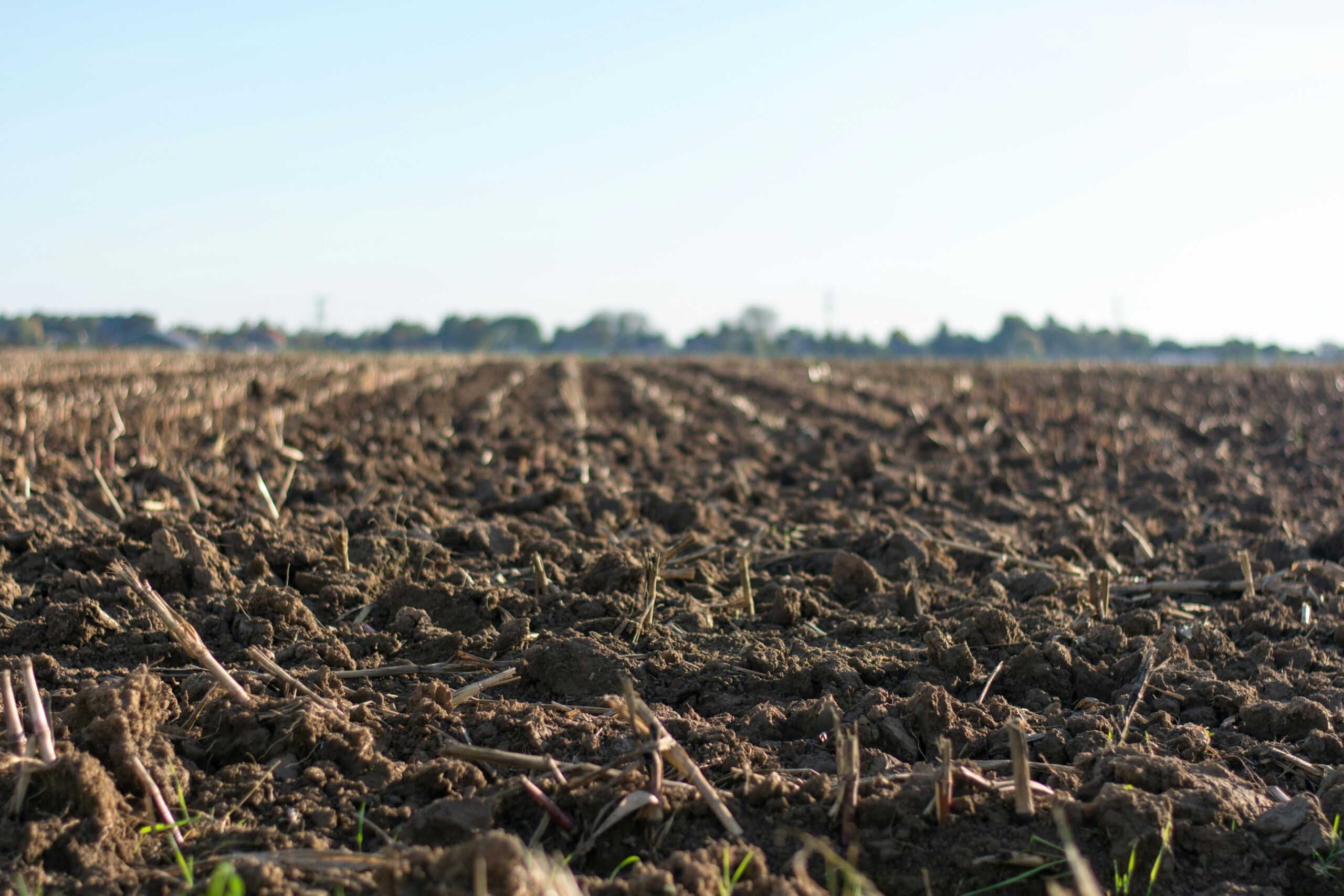Are you aware of the hidden potential beneath your feet? Soil, the foundation of our planet’s ecosystems, holds valuable information that can greatly impact various industries, from agriculture to construction. Understanding the quality and composition of soil is crucial for making informed decisions. That’s where soil testing comes into play. In this article, we delve into the significance of soil testing, its benefits, and how it can empower you to optimize your projects. Whether you’re a farmer, gardener, or builder, get ready to unlock the secrets of soil!
The Basics of Soil Testing
Soil testing is a scientific process that helps analyze the properties and characteristics of soil samples. By examining various factors such as nutrient levels, pH balance, organic matter content, and soil composition, experts can gain valuable insights into the soil’s health and suitability for specific purposes.
Why is Soil Testing Important?
Soil testing plays a crucial role in various industries and applications. Let’s explore why it is so important:
Agriculture
Farmers heavily rely on soil testing to optimize crop production. By understanding the nutrient levels present in the soil, farmers can make informed decisions about fertilization and nutrient management. Soil testing also helps identify any deficiencies or imbalances, enabling farmers to provide the necessary amendments and ensure healthy and robust crop growth.
Gardening and Landscaping
For avid gardeners and landscapers, soil testing is a valuable tool for creating and maintaining a thriving garden or landscape. By analyzing the soil’s pH level, texture, and nutrient content, gardeners can determine the appropriate plants to cultivate and the necessary amendments to enhance soil fertility. This knowledge can lead to healthier plants, vibrant blooms, and bountiful harvests.
Environmental and Conservation Efforts
Soil testing also plays a vital role in environmental and conservation efforts. By assessing soil quality in natural habitats, researchers can monitor and protect ecosystems, ensuring their long-term sustainability. Additionally, soil testing helps identify areas affected by pollution or contamination, enabling environmentalists to implement appropriate remediation measures.
Construction and Engineering
In the construction and engineering industries, soil testing is crucial for assessing the stability and suitability of land for building projects. Engineers can analyze soil properties to determine factors such as load-bearing capacity, compaction characteristics, and drainage capabilities. This information helps ensure the safety and durability of structures, preventing potential hazards and costly repairs.
Overall, soil testing is a fundamental practice that provides essential information for a wide range of applications. Whether you’re a farmer, gardener, environmentalist, or engineer, understanding the properties and characteristics of soil empowers you to make informed decisions and optimize your projects.
The Process of Soil Testing
So, how exactly does soil testing work? Let’s take a closer look at the process:
1. Sample Collection
The first step in soil testing is collecting representative soil samples from the desired area. It’s important to collect samples from various locations within the area to ensure accurate results. The samples should be collected using clean tools and containers to prevent contamination.
2. Laboratory Analysis
Once the soil samples are collected, they are sent to a laboratory for analysis. In the lab, experts conduct a series of tests to assess different aspects of the soil. These tests may include nutrient analysis, pH testing, organic matter content determination, and soil texture analysis.
3. Result Interpretation
After the laboratory analysis is complete, the results are interpreted by professionals. They analyze the data and provide a detailed report that outlines the various parameters tested and their corresponding values. The report may also include recommendations for soil amendments or management practices based on the specific requirements of the intended application.
4. Implementing Recommendations
Once the soil testing report is received, it’s time to implement the recommendations provided. This may involve adding specific fertilizers or soil amendments to improve nutrient levels, adjusting pH through the addition of lime or sulfur, or adopting specific management practices to enhance soil health.
5. Periodic Testing
Soil conditions can change over time, so periodic soil testing is recommended for maintaining optimal soil health. It is advised to conduct soil tests every few years or whenever significant changes occur in land use or management practices.
The process of soil testing provides valuable insights into the characteristics of the soil, allowing individuals to make informed decisions and optimize their activities accordingly. By following this process, you can ensure that your soil is healthy, productive, and suitable for your specific needs.
The Benefits of Soil Testing
Soil testing offers numerous benefits that can positively impact various aspects of your projects and endeavors. Let’s explore some of these benefits:
Optimized Nutrient Management
By knowing the nutrient levels present in your soil, you can tailor your fertilization practices accordingly. Soil testing helps you determine which nutrients are lacking or in excess, allowing you to provide the necessary amendments and avoid over-fertilization. This optimization of nutrient management leads to healthier plants, improved yields, and cost savings.
Enhanced Plant Health
Understanding your soil’s characteristics through testing enables you to create an ideal environment for plant growth. By adjusting pH levels and addressing nutrient deficiencies, you can ensure that your plants have the necessary conditions to thrive. Healthy plants are more resistant to pests, diseases, and environmental stressors, resulting in higher-quality crops or vibrant gardens.
Cost-Efficiency
Soil testing can help you save money in the long run. By identifying the specific needs of your soil, you can avoid unnecessary expenses on fertilizers or soil amendments that may not be required. Additionally, by preventing issues related to poor soil health, such as crop failure or plant diseases, you can avoid costly remediation measures or loss of investments.
Environmental Sustainability
Soil testing promotes environmental sustainability by minimizing the use of chemical fertilizers and potential pollution. By understanding the nutrient status of your soil, you can apply fertilizers judiciously, reducing the risk of nutrient runoff into water bodies. This helps protect the environment and maintain the ecological balance.
Improved Land and Construction Management
For construction and engineering projects, soil testing is essential for assessing land suitability. By understanding the soil properties, engineers can design appropriate foundations and structures, ensuring long-term stability and safety. Soil testing also helps identify potential issues such as soil contamination, enabling proper remediation measures to be implemented.
By harnessing the benefits of soil testing, you can optimize your projects, promote sustainability, and achieve better results. It’s a valuable tool that empowers you to make informed decisions and ensures the long-term health and productivity of your soil.
The Importance of Professional Soil Testing
While DIY soil testing kits may be readily available, there are several reasons why professional soil testing is highly recommended:
Accurate and Reliable Results
Professional soil testing labs utilize specialized equipment and follow standardized procedures to ensure accurate and reliable results. Their expertise and experience in analyzing soil samples allow for more precise measurements and interpretations, providing you with trustworthy data to base your decisions upon.
Comprehensive Analysis
Professional soil testing labs offer a wide range of tests to comprehensively assess your soil’s properties. They can evaluate nutrient levels, pH balance, organic matter content, cation exchange capacity, and other critical parameters. This comprehensive analysis provides a holistic understanding of your soil’s health and allows for targeted recommendations.
Interpretation and Recommendations
Interpreting soil test results can be complex, and professional soil testing labs have the expertise to accurately analyze and interpret the data. They can provide detailed reports that explain the results in a clear and understandable manner. Additionally, professional soil testers can offer tailored recommendations for soil amendments, fertilizers, and management practices based on the specific requirements of your project or crop.
Access to Specialized Tests
Professional soil testing labs often have access to specialized tests that may not be available in DIY kits. These tests can provide valuable insights into specific soil characteristics, such as micronutrient levels or mineral composition. By utilizing these advanced tests, you can gain a more in-depth understanding of your soil’s properties.
Long-Term Support and Monitoring
Establishing a relationship with a professional soil testing lab allows for long-term support and monitoring of your soil. They can assist you in developing a soil management plan, offer periodic testing services, and track changes in your soil over time. This ongoing support ensures that you can adapt your practices as needed and maintain optimal soil health.
While DIY soil testing kits may serve as a preliminary assessment, professional soil testing offers more accurate and comprehensive results, expert interpretation, and long-term support. Investing in professional soil testing can provide you with the knowledge and guidance needed to make informed decisions and maximize the potential of your soil.
The Future of Soil Testing: Technological Advancements
As technology continues to advance, the field of soil testing is also evolving. Here are some exciting developments shaping the future of soil testing:
Remote Sensing and Imaging
Remote sensing technologies, such as satellite imagery and aerial drones, are revolutionizing soil testing. These tools can assess large areas of land quickly and provide valuable data on soil composition, moisture levels, and nutrient distribution. Remote sensing enables farmers, researchers, and land managers to make informed decisions based on real-time and high-resolution information.
Mobile Apps and Handheld Devices
Mobile apps and handheld devices are becoming increasingly popular for on-the-spot soil testing. These tools allow users to collect soil samples, analyze them using portable devices, and receive instant results. They provide convenience and accessibility, particularly for farmers and gardeners who require rapid soil assessments in the field.
Artificial Intelligence (AI) and Machine Learning
AI and machine learning algorithms are being employed to analyze vast amounts of soil data more efficiently. These technologies can identify patterns and correlations, helping to predict soil behavior and optimize soil management strategies. AI-powered systems can also provide personalized recommendations based on specific soil conditions and desired outcomes.
Real-Time Monitoring and IoT
The Internet of Things (IoT) is enabling real-time monitoring of soil conditions through the use of sensors and connected devices. These devices can measure soil moisture, temperature, and nutrient levels, among other parameters. Real-time data allows for timely interventions, precise irrigation scheduling, and efficient resource management.
Integrated Systems and Data Analytics
Integration of soil testing data with other agricultural or environmental data sources is becoming more prevalent. By combining soil data with weather data, crop data, or land management practices, comprehensive insights can be gained. Data analytics techniques can uncover hidden trends and provide actionable information for sustainable land use and precision agriculture.
The future of soil testing is promising, with technological advancements enabling more efficient and precise assessments. These innovations empower farmers, researchers, and land managers to make data-driven decisions, optimize resource utilization, and promote sustainable practices. As technology continues to evolve, the field of soil testing will play a vital role in ensuring the health and productivity of our soils.
In conclusion, soil testing is an essential practice that provides invaluable insights into the characteristics and health of our soils. Whether you’re involved in agriculture, gardening, construction, or environmental conservation, understanding your soil’s properties is crucial for making informed decisions and optimizing your projects.By conducting professional soil testing, you can obtain accurate and reliable results that guide your nutrient management practices, enhance plant health, and promote cost-efficiency. Professional soil testing also offers comprehensive analysis, expert interpretation, and access to specialized tests, ensuring a thorough understanding of your soil’s needs.
As technology advances, the future of soil testing looks promising. Remote sensing, mobile apps, AI, real-time monitoring, and integrated systems are revolutionizing the field, providing faster, more precise, and data-driven assessments. These advancements empower us to make smarter decisions, improve resource management, and contribute to environmental sustainability.
So, whether you’re a farmer aiming to maximize crop yields, a gardener seeking vibrant blooms, or an engineer ensuring the stability of structures, soil testing is the key to unlocking the potential of your projects. Embrace the power of soil testing, and let it guide you towards healthier soils, higher productivity, and a sustainable future.

